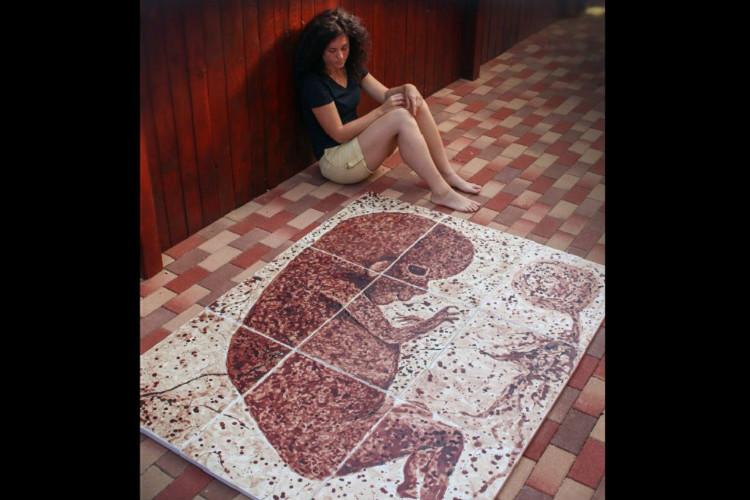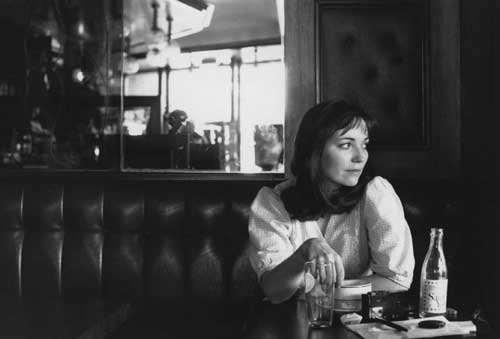By juxtaposing societal rules and art, Yoko Ono’s “Cut Piece” defied the standards of performance art and blended together two opposite ideals.
Prior to her publicized relationship to the Beatle’s John Lennon, Ono was known as a Japanese artist whose avant-garde performance art became popular worldwide. In her later years, Ono has described her art as “a way of showing people how you can think.” She says that her interpretation of art has always had to do with activism, and her prior performance art sets have certainly proved that to be true, especially “Cut Piece.”
“Cut Piece” was one of Ono’s earliest and therefore most popular performances. During this conceptual performance, Ono passively sat onstage at Carnegie Hall while audience members were invited to come up and cut away at her clothing, one strip at a time. The piece was filmed by filmmakers Albert and David Maysles, who captured the actions that unfolded onstage as pieces of Ono’s garments were sheared away. Before this performance in Carnegie Hall, Ono had previously demonstrated her piece in Japan; during these performances, the audience had proved to be respectful with the exception of one man who held the scissors in an aggressive way, as if he intended to stab her.
Ono did not provide much information about the background meaning of “Cut Piece.” She preferred to keep the significance of the performance up to interpretation, much like many other performance artists enjoy doing. When the piece was first introduced in the United States at Carnegie Hall, it was denounced as being overly simplistic and not complex enough to hold any deeper meaning. However, this opinion of Ono’s work certainly has changed over the years. Art critics later categorized this piece as a protest against violence in the midst of the Vietnam War. Ono herself described it as a test to her commitment as an artist. More recently, critics call it a feminist work and, at the time in which it was performed, represented something like an interactive strip show; by allowing the audience to cut away at her clothes, Ono is thereby holding the power by giving the perpetrators of the cutting permission to devalue her clothing.
Ono has later spoken out about “Cut Piece” and has said that her motivation for the work came from “the desire to create art free from the ego.” She explained that it came from the idea of saying, “’Here you are, take anything you want, any part you want,’ rather than pushing something you chose on someone else.” She was also motivated by a childhood story about Buddha sacrificing his body for a hungry tiger, according to Open Culture; there are certainly some similarities that can been seen between this parable and Ono’s performance piece.
Ono performed this piece again in 2003, aged 70 years old, and noted that the motivation for “Cut Piece” had changed from one of rage to one of love. Her reenactment of her piece was, to her, an expression of her desires for world peace. At the time that this piece was performed, Ono told Reuter News Agency that she did it “against ageism, against racism, against sexism, and against violence.”
As Ono combats different discriminations aimed towards her throughout her life, she reenacts the piece with a different interpretation in mind. The accessibility of “Cut Piece” reinforces the fluidity of the piece; its interpretation is not just what the artist defines, but what is significant to the viewer. Therefore, “Cut Piece” has a variety of interpretations, and has resurfaced several times since its first performance in 1963 as new issues arise in society. Critics have discussed the reemergence of “Cut Piece,” and note that the most recent performances in 2003 of the piece were not conducted “merely to ensure the continued existence of her work, but in order to make a difference in the present.” As time moves forward, the piece envelops new meaning and significance. Ono has described her performance as a “seed” to be planted in “the minds and actions of those who receive them.” The piece is meant not to start a riot or protest, but to make the viewer question the underlying connotation of the cutting of one’s clothes.
Of course, there have been attempts of reenactment by other artists since the time of its first performance. However, indiscriminate additions have been made to many of these attempts that take away from the original meaning that Ono was attempting to portray. For example, Jon Hendricks performed “Cut Piece” in 1968 using a suit bought from a thrift store, thus changing the entire interpretation of the piece. Ono was dressed in her best clothes when she first performed “Cut Piece” at Carnegie Hall, demonstrating that her power was being taken away from her as her best and most expensive garments were being torn apart. By using a cheap, old suit, Hendricks chooses to ignore the idea of removal of power that Ono was trying to convey. Nevertheless, the reemergence of Ono’s performance by all artists and in all shapes and forms reinforces the fluidity of its interpretation as different issues are presented in society.
Ono’s “Cut Piece” was a model of performance art in the 1960s, and the simplicity of the performance makes it accessible to all decades, creating a lifespan of over 50 years. As new issues develop in society and more problems are to be tackled, more interpretations can be added to the significance of the work, creating a performance piece that is timeless in quality.
#yokoono #performanceart #cutpiece






